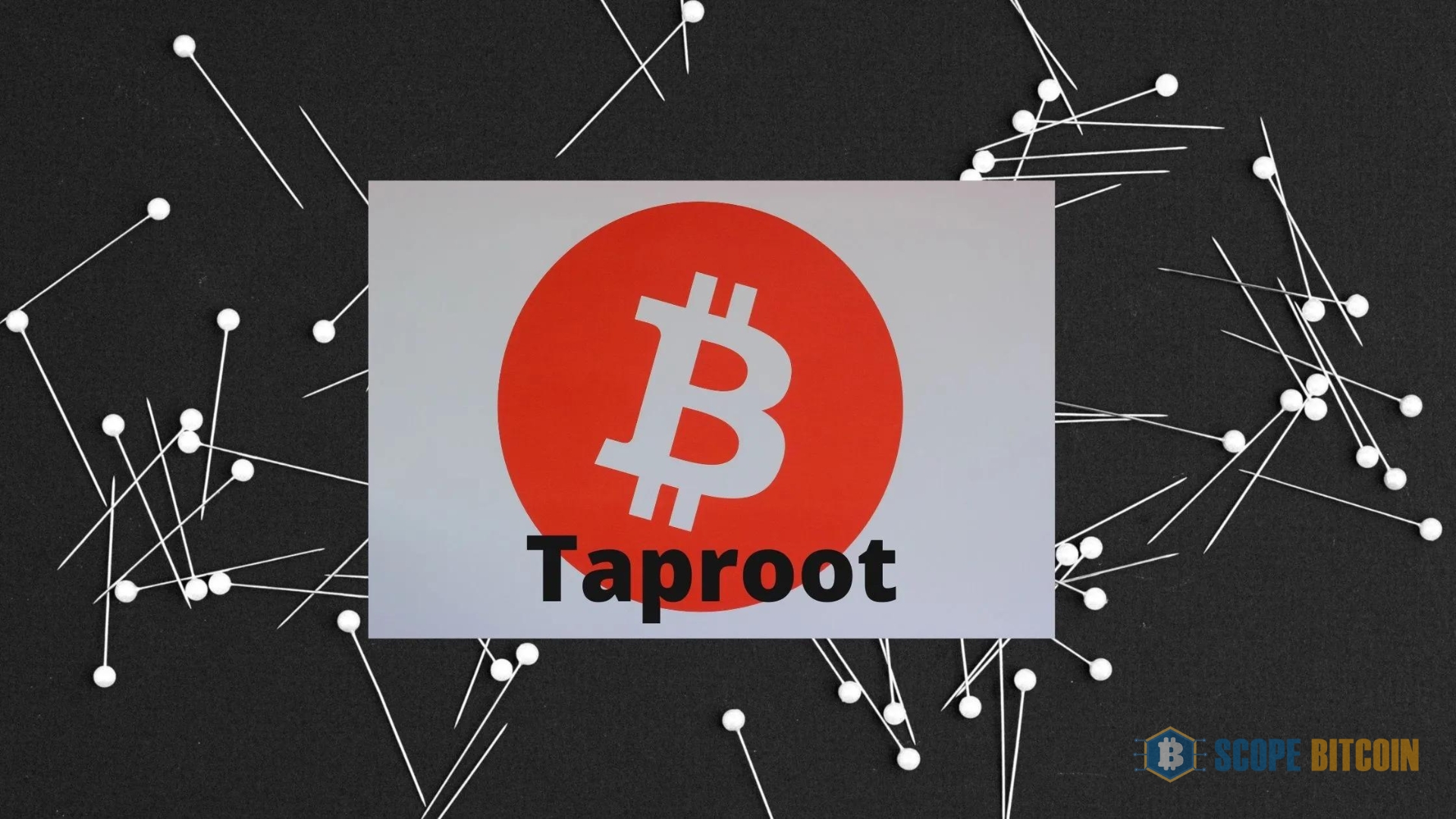
Bitcoin Taproot Upgrade: An In-depth Explanation
Bitcoin Taproot Upgrade. The most significant upgrade to Bitcoin after activating Segregated Witness (SegWit) in 2017 was the Bitcoin Taproot update. The Taproot improvement is similar to SegWit in that it seeks to enhance network privacy and efficiency; however, it is bigger in scope and may have a more substantial influence in the long run.
One of the benefits of upgrading to Bitcoin Taproot is that it will promote the usage of smart contracts. These contracts can help the leading cryptocurrency achieve decentralized finance (DeFi) by doing away with intermediaries in financial transactions. Bitcoin miners reached a 90% consensus in favor of the June 12, 2021 upgrade. At block 709,632 on November 14, 2021, the Bitcoin Taproot upgrade was fully enabled via a protocol soft fork. However, the upgrade date was not formalized until November 2021.
Node operators and miners could accomplish a full upgrade to the most recent Bitcoin Core version 21.1, including the Taproot update, during the six months between the lock-in and the activation. This essay summarizes the most important protocol changes enforced by the Taproot upgrade and explains how Bitcoin will profit from these changes in the long run.
Who Developed Taproot Bitcoin?
Since SegWit’s deployment in 2017, developers of Bitcoin Core have looked into ways to increase its capability. In 2018, one of the top developers of the cryptocurrency, Greg Maxwell, initially proposed the Taproot project. Three Bitcoin Improvement Proposals (BIPs) codified Taproot, and Pieter Wuille is the author of all three. Along with Maxwell and Wuille, developers Jonas Nick, A.J. Townes, and Tim Ruffing were brought on board in 2020 to execute the overhaul.
Due to its status as a Bitcoin soft fork, Taproot is compatible with earlier software versions. Unlike Bitcoin Cash, it eliminates the need to split into independent blockchains and currency. After causing the network to split and Bitcoin Cash to be created, SegWit gained notoriety in 2017 for its profound effects on the cryptocurrency, without affecting important features like decentralization, that update increased the size of Bitcoin blocks.
On the other hand, those who opposed SegWit were pushing for larger blocks. Hard forking the Bitcoin blockchain became necessary when consensus on the same protocol broke down, creating two distinct cryptocurrencies: Bitcoin (BTC), $57,947, and Bitcoin Cash (BCH), $343.Since Taproot isn’t a hard fork, it hasn’t caused as much controversy as SegWit. Its substantial incremental improvements to the code contributed to its immediate and widespread popularity among miners.
Although many miners have already upgraded to the most recent Bitcoin software, other participants, including merchants, exchanges, and normal node operators, will upgrade at their own pace according to their priorities. Despite widespread support, taproot adoption is anticipated to increase gradually over time, similar to how the SegWit upgrade transpired. There will be noticeable effects on DeFi from smart contracts over time, which are likely to be substantial.
What is the Taproot, and How Does it Benefit Bitcoin?
The Taproot aims to improve Bitcoin’s speed, efficiency, and privacy. The upgrade makes validating transactions on the Bitcoin network easier and faster by allowing several signatures and transactions to be batched together.
Digital signatures, similar to fingerprints, are validated against public keys as part of Bitcoin’s regular procedure before the Taproot. This ensures that transactions are verified individually. With the latest update to Taproot, it is now possible to collect and verify numerous complex signatures simultaneously, making it ideal for use with multi-signature wallets and similar solutions.
Implementing Schnorr signatures over the Elliptic Curve Digital Signature Algorithm (ECDSA) will make this major shift possible. The ECDSA algorithm generates a signature using the private key that controls the wallet to ensure that only the authorized owner executes a Bitcoin transaction.
Compared to ECDSA, Schnorr signatures offer superior security. The fact that they are linear means complicated transactions can be validated in batches rather than one by one. A simpler and more efficient solution is made possible when multiple parties work together to generate a single signature valid for the total of their public keys.
By aggregating signatures, the network can perform more transactions faster and cheaper, saving block space. With Taproot, Bitcoin’s scalability will improve, removing a major obstacle to its adoption. Another method Taproot improves privacy is by eliminating discrepancies between multi-signature and single-signature transactions. Keeping private data this way makes it harder to identify transaction participants’ inputs.
By removing the concern that smart contracts with numerous signatories and complicated transactions could overwhelm the system, Taproot makes a major step forward by enabling Bitcoin to host smart contracts. The data size decreases, making the single-signature transaction less data-intensive.
Taproot Updated Three Times Simultaneously
The Taproot upgrade allows combining three related proposals to improve Bitcoin’s scalability. Proposals to change Bitcoin’s protocol or even fix bugs must follow a specific process for submission. A BIP is a standard procedure without a central authority, starting with simple ideas that developers submit to the community.
When the proposal receives the relevant attention of other developers, it gets published to the Bitcoin Core GitHub repository of BIPs waiting for activation. The Taproot upgrade includes three concurrent BIPs, as explained below.
BIP 340 – Schnorr Signatures
Schnorr is a digital signature method that is faster, more secure, and requires less data than ECDSA. It completely replaces ECDSA and provides a digital signature system.
BIP 341 – Taproot
Taproot empowers customers with increased privacy and freedom, providing a novel approach to conducting Bitcoin transactions. Additionally, it activates Merklized Alternative Script Trees (MAST), which transform complicated Bitcoin transactions into a single hash. This results in reduced transaction fees, reduced memory use, and improved Bitcoin’s scalability.
BIP 342 – Tapescript
Taproot script-path spends are written in Tapscript, the scripting language used for them. This update uses Schnorr’s efficiency and makes it possible to have more flexibility regarding future upgrades.
Bitcoin Taproot Smart contracts
Because of the Taproot improvement, smart contracts are now smaller, cheaper, and take up less space on the blockchain, which is a huge deal for Bitcoin’s utility. An intermediary is no longer necessary to facilitate secure transactions thanks to smart contracts, agreements between two parties that execute themselves on the blockchain.
The Taproot enhances Bitcoin’s capacity to support base-chain smart contracts by addressing scalability. In this manner, the leading cryptocurrency becomes an adversary to Ethereum, its more well-known smart contract rival.
Since smart contracts provide great promise for practical uses, this upgrade unlocks a floodgate of new possibilities for Bitcoin. A highly effective use case for smart contracts is decentralized finance (DeFi). Without a traditional bank or other intermediary, they make it possible for people to borrow or lend money safely. From the regular monthly payment of rent to the registration of ownership of an object, smart contracts can be utilized for every type of transaction and practical activity.
Bitcoin Taproot Upgrade Means for Investors
Since the Taproot is merely a technical update, most users will remain oblivious to its presence. However, investors should watch this development since it might have huge long-term consequences for the leading cryptocurrency.
Regarding Bitcoin’s traditional issues, the Taproot is finally here to save the day. The improvement of Bitcoin’s speed and efficiency about its scalability has long been an objective of its creators, and Taproot offers the necessary resources to achieve this goal.
Thus, fees decrease since the blockchain can process more entries with less data due to smaller complex transactions. With Taproot, the Lighting Network will be more efficient, affordable, private, and flexible for consumers and developers. This creates the technological conditions to accelerate DeFi’s peer-to-peer financial services’ Bitcoin network implementation. Bitcoin’s Taproot boosts its utility for long-term entrepreneurs. Taproot’s stability and efficiency could help investors trust top cryptocurrency fundamentals.
Before the Taproot upgrade, the value of Bitcoin skyrocketed, reaching a record high of $64,000 on November 12, 2021. The introduction of Bitcoin as legal tender in El Salvador and its potential as a hedge against inflation caused the cryptocurrency’s price to skyrocket.
But as trust in the network grows, experts say the Taproot also contributed to a dramatic surge in Bitcoin’s value. Nevertheless, the future effect of the improvement on Bitcoin’s price is hard to foretell. The soft fork appears to have already been priced in, and its primary effect will be to improve network efficiency rather than cause immediate price changes.
Without a doubt, competing smart contract platforms such as Ethereum (ETH$3,097), Solana (SOL$141), and Cardano (ADA$0.39) will lose ground to Bitcoin’s prospective increased usage of smart contracts. In the coming years, observing whether mainstream and institutional participants continue to use the current platforms or transition to Bitcoin will be fascinating.







